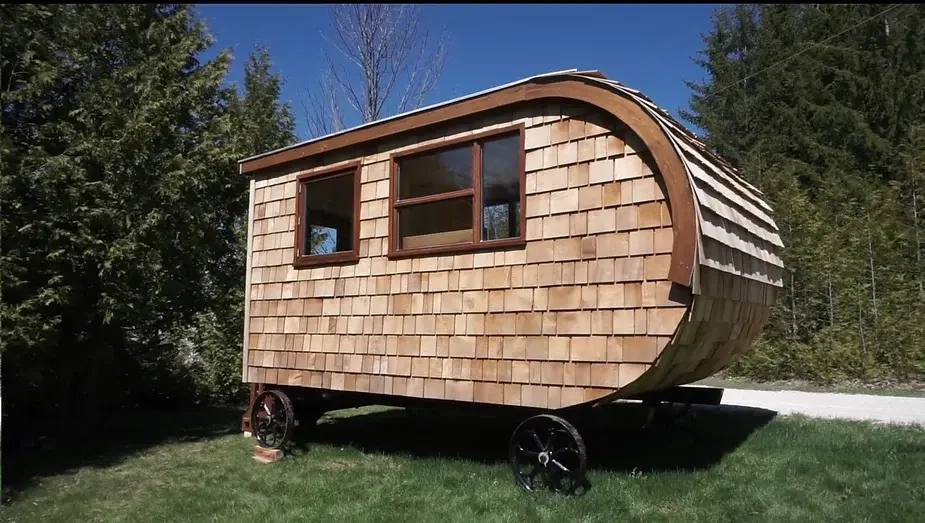The hut has a cozy L-shaped area where you can sit or sleep on a double bed. It also has a smart desk that folds up and a table for eating. There’s a small bed that folds into the wall for one person or a child, and space to keep blankets, pillows, cups, and plates.
You can hang a TV on the wall, and there are hooks for hanging folding chairs to keep them out of the way.
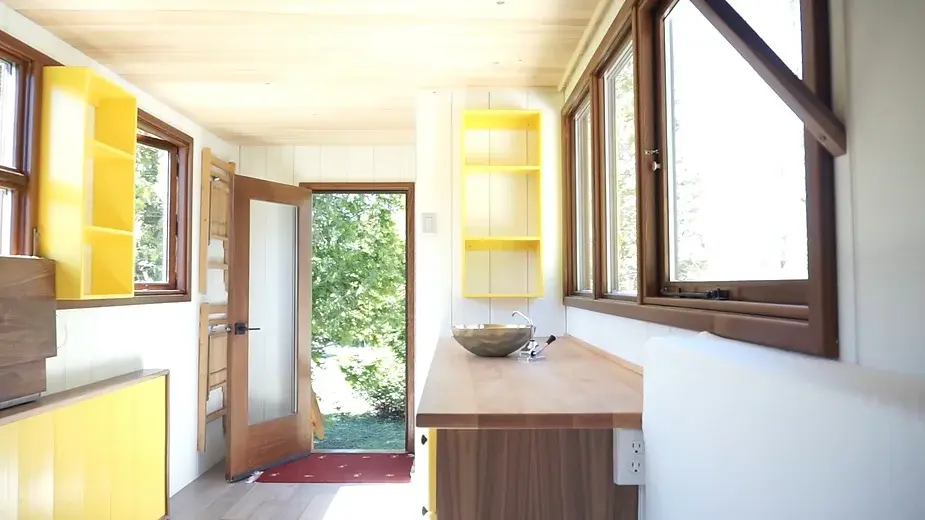
The tiny cabins are small, only 108 square feet or less. This size means they count as garden-shed style buildings in Ontario, so you don’t need a special building permit.
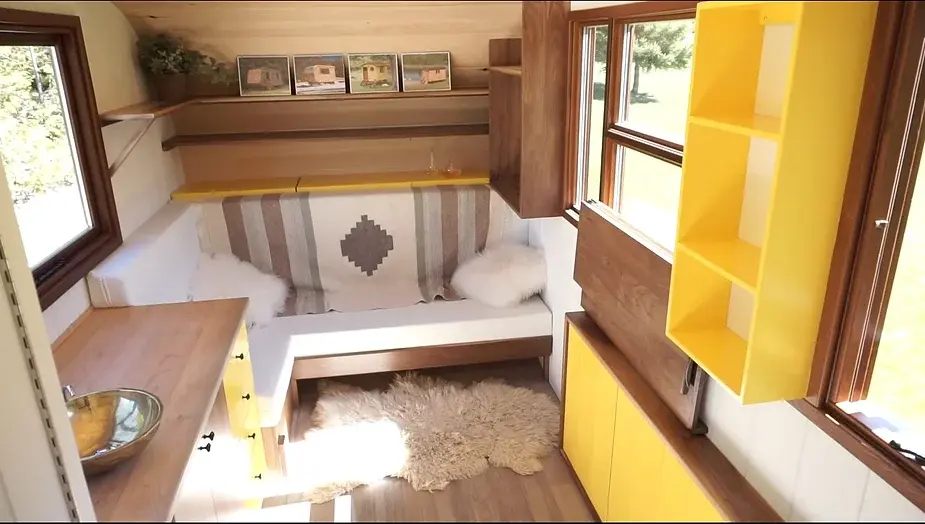
These huts are not connected to the main power or water. They have composting toilets and a hand pump for water. You can also use solar panels for electricity.
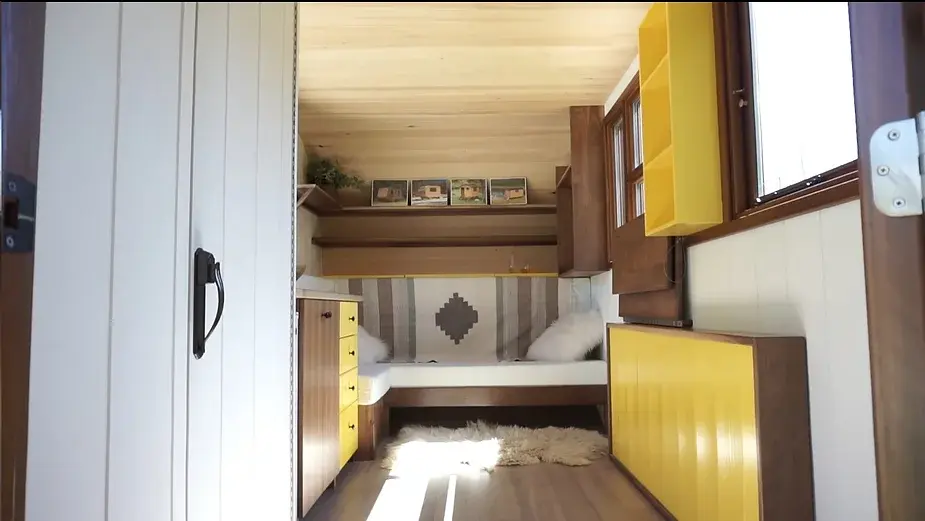
The design has a special rounded bump-out on one end that gives more room inside without making the building bigger on the outside.
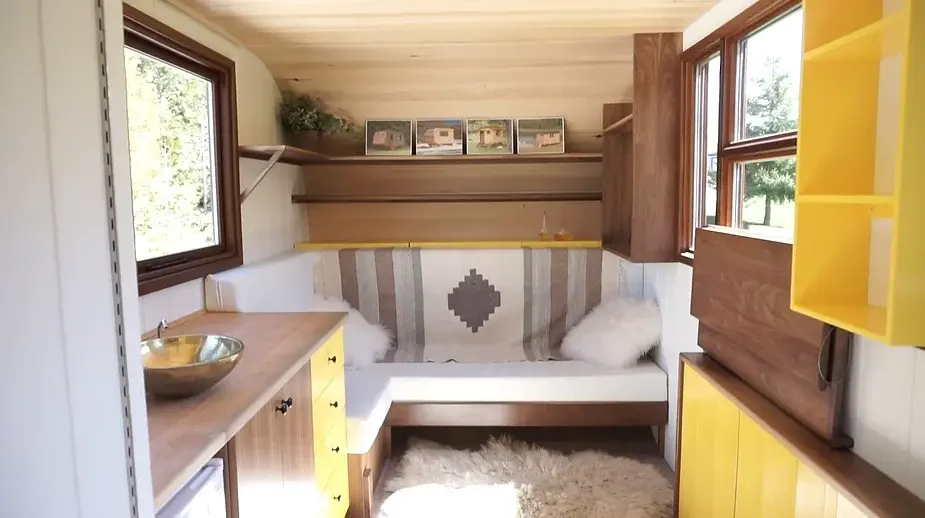
Dylan and his dad build these small cabins on trailers with old-fashioned iron wheels. People use them for tiny homes, writer’s retreats, small guest houses, and portable home offices.
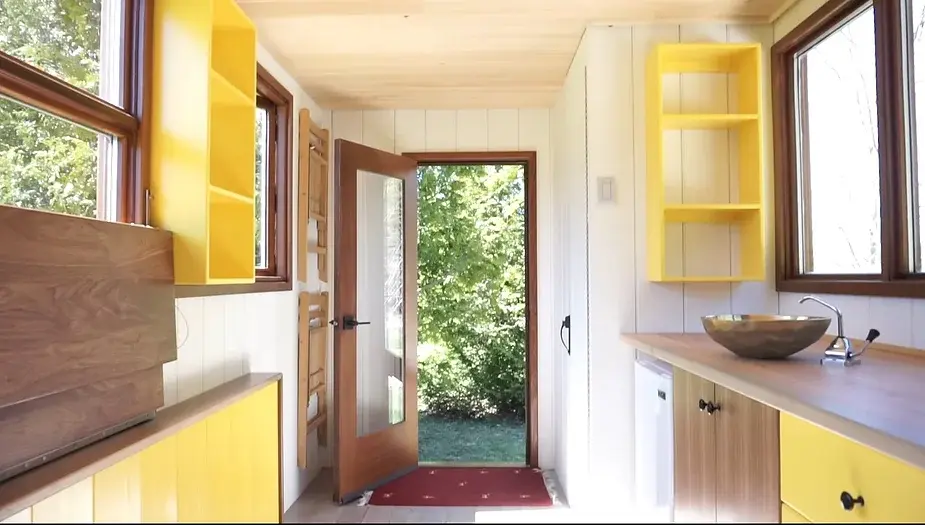
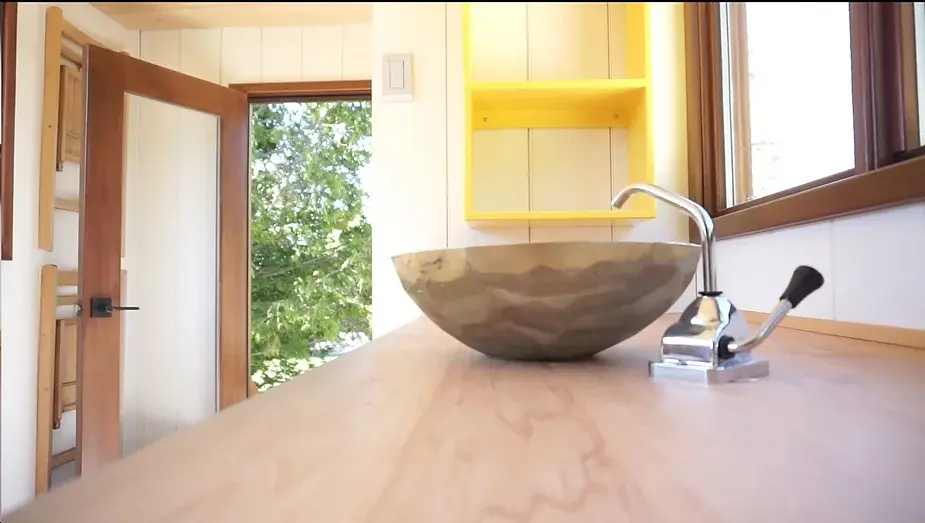
They make every part of these huts by hand, including the building, furniture, doors, and window frames. Dylan and his dad try hard to use local materials and workers for things like cutting wood and making iron.
